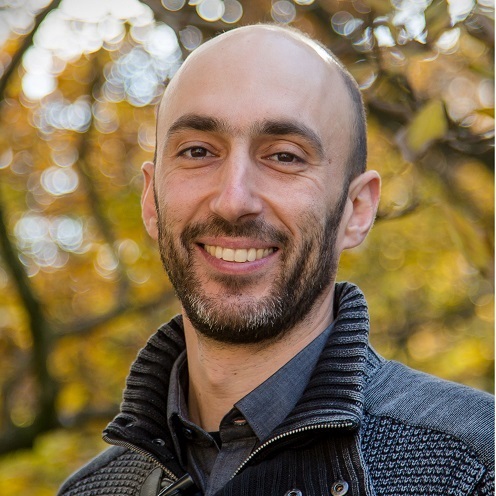Quantum Alchemy: Researchers use laser light to transform metal into magnet
Pioneering physicists from the University of Copenhagen and Nanyang Technological University in Singapore have discovered a way to get non-magnetic materials to make themselves magnetic by way of laser light. The phenomenon may also be used to endow many other materials with new properties.

The intrinsic properties of materials arise from their chemistry -- from the types of atoms that are present and the way that they are arranged. These factors determine, for example, how well a material may conduct electricity or whether or not it is magnetic. Therefore, the traditional route for changing or achieving new material properties has been through chemistry.
Now, a pair of researchers from the University of Copenhagen and Nanyang Technological University in Singapore have discovered a new physical route to the transformation of material properties: when stimulated by laser light, a metal can transform itself from within and suddenly acquire new properties.
"For several years, we have been looking into how to transform the properties of a matter by irradiating it with certain types of light. What’s new is that not only can we change the properties using light, we can trigger the material to change itself, from the inside out, and emerge into a new phase with completely new properties. For instance, a non-magnetic metal can suddenly transform into a magnet," explains Associate Professor Mark Rudner, a researcher at the University of Copenhagen’s Niels Bohr Institute.
He and colleague Justin Song of Nanyang Technological University in Singapore made the discovery that is now published in Nature Physics. The idea of using light to transform the properties of a material is not novel in itself. But up to now, researchers have only been capable of manipulating the properties already found in a material. Giving a metal its own 'separate life', allowing it to generate its own new properties, has never been seen before.
By way of theoretical analysis, the researchers have succeeded in proving that when a non-magnetic metallic disk is irradiated with linearly polarized light, circulating electric currents and hence magnetism can spontaneously emerge in the disk.
Researchers use so-called plasmons (a type of electron wave) found in the material to change its intrinsic properties. When the material is irradiated with laser light, plasmons in the metal disk begin to rotate in either a clockwise or counterclockwise direction. However, these plasmons change the quantum electronic structure of a material, which simultaneously alters their own behavior, catalyzing a feedback loop. Feedback from the plasmons’ internal electric fields eventually causes the plasmons to break the intrinsic symmetry of the material and trigger an instability toward self-rotation that causes the metal to become magnetic.
Technique can produce properties 'on demand’
According to Mark Rudner, the new theory pries open an entire new mindset and most likely, a wide range of applications:
"It is an example of how the interaction between light and material can be used to produce certain properties in a material 'on demand'. It also paves the way for a multitude of uses, because the principle is quite general and can work on many types of materials. We have demonstrated that we can transform a material into a magnet. We might also be able to change it into a superconductor or something entirely different," says Rudner. He adds:
"You could call it 21st century alchemy. In the Middle Ages, people were fascinated by the prospect of transforming lead into gold. Today, we aim to get one material to behave like another by stimulating it with a laser."
Among the possibilities, Rudner suggests that the principle could be useful in situations where one needs a material to alternate between behaving magnetically and not. It could also prove useful in opto-electronics – where, for example, light and electronics are combined for fiber-internet and sensor development.
The researchers’ next steps are to expand the catalog of properties that can be altered in analogous ways, and to help stimulate their experimental investigation and utilization.
Topics
Contact
Mark Spencer Rudner
Associate Professor
Condensed Matter Physics
Niels Bohr Institutet
rudner@nbi.ku.dk
Maria Hornbek
Journalist
The Faculty of Science
maho@science.ku.dk
+45 22 95 42 83
